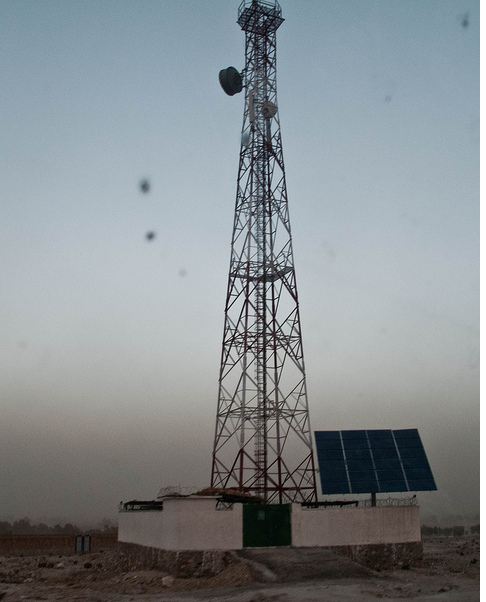Kabul, Afghanistan – In this rugged land, mobile phones are lifelines of incalculable value.
They are the means by which the central government manages its provincial agents and the tool used to alert rural populations are to impending dangers, from outbreaks of infectious disease to hastily-erected roadblocks manned by murderous gunmen.
Even in valleys that have never known electricity, pre-paid mobile phones and solar chargers abound. These simple devices connect nomads and farmers to each other and enable villages otherwise untouched by modern technology to receive information from anywhere in the world, and, radically, to also send information out.
No wonder, then, that the Taliban are waging a war against Afghanistan’s telecoms. Ostensibly to prevent international forces from using mobile phone signals to locate their fighters, the militants regularly blow up and shut off mobile phone antennas. Robbed of reception, local populations are plunged into an information blackout that is as terrifying as it is absolute, a scenario scarcely imaginable for those of us who can take as a given the ability to reach help simply by pressing a button.
Entire provinces have been cut off for a week or more following Taliban attacks, which are increasing in frequency and spreading from the war-torn southern provinces to newly destabilized areas in the north of the country.
In some districts, the Taliban have left towers intact on the condition that they are turned off between nightfall and sunrise. Faced with the choice of severing communications during the dark hours or seeing their towers leveled by explosives, the telecoms have, without exception, complied with the Taliban’s demands.
These nighttime blackouts have multiplied the life-threatening hardships endured by rural Afghans. In 2010, a teenage boy in Kandahar told the Wall Street Journal that his ailing father nearly died because he could not call a taxi to drive them from their village to the hospital in Kandahar city.
“We had to carry my father on the back of a donkey,” the teenager said. “The doctors told me that it was just appendicitis. But we almost lost him.”
Other civilians with severe but not necessarily fatal injuries –women hemorrhaging in childbirth, badly burned children and victims of landmines– face the same precarious situation, desperately needing immediate, life-saving treatment, but unable to summon help.
Repeated attempts by NATO, local populations and the Kabul-based telecoms to protect phone antennas have failed, so the US military has devised a new plan to safeguard Afghans’ access to mobile technology: it will set up antennas for Afghanistan’s existing private telecoms on its own bases across the south.
While the Taliban build shadow governments in virtually every province of Afghanistan, the United States and its Afghan telecom allies will build a shadow mobile phone network to circumvent the Taliban’s attempts to cut off communication.
Speaking to the AFP on condition of anonymity, a military official said that mobile phone antennas might even be set up on trucks and balloons or unmanned drone aircraft to provide phone reception for Afghans.
The shadow network initiative, which is part of a broader push by the US government to expand and protect civilian access to communication technologies in closed and embattled societies, is not without its skeptics.
“I like the intention here, but how on earth is this anything like a long-term solution for handling cell shut downs?” analyst Joshua Foust of Registan.net wrote when the story broke.
No one should confuse the planned shadow network with development. It is not development, or even emergency aid. It is a short-term communication fail-safe for a country where a simple text message – ‘shooting on road to town, turn back!’ – can draw the line between life and death.
Entirely and self-consciously unsustainable, the shadow network will buy time for the development of better alternatives, keeping lines of communication open while civilian and military officials, Afghan and foreign alike, find a way to bring Afghanistan’s long era of bloodshed to a close. Or, so we hope.
